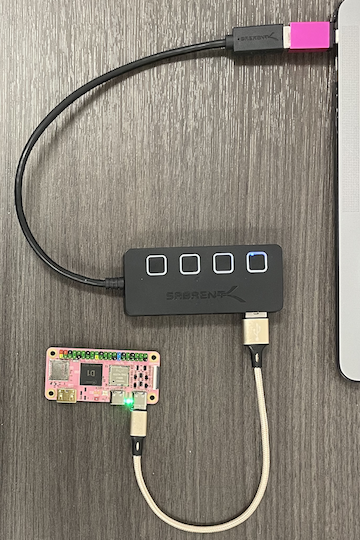We will supply power to the Mango Pi via usb. Find the two USB-C ports along the edge of the Mango Pi board. The port that is closer to the corner is labeled OTG.
USB On-The-Go (OTG) is a USB sub-specification that allows devices to switch between the roles of host and device. Connecting a 5V power source to either usb port will power up the Pi, but we connect to the OTG port because it additionally suppports the communication protocol used by the xfel bootloader we will be using to load and execute programs on the Pi.
Connect a usb cable from a usb port on your laptop to the OTG port on the Mango Pi. The green power LED turns on when the Pi is receiving power. It is blindingly bright! We wish it were possible to dim it. If you find a way, please share.

The Pi does not need much power. We can measure how much power it requires by using an inline power meter. The usb specification says that a usb port should supply 5V, and up to 500 mA of current. Our experiment shows that when the Pi is plugged it, the usb port has a voltage of 5.12V and is supplying 80 mA of current. The total power being consumed is 0.41 W. That is not a lot of power! The power used may go up if you are using LEDs and other peripherals.

To reset the Pi, simply interrupt its power supply. One way to do this is by briefly unplugging and re-plugging the usb cable. Connecting through a usb hub or cable that has a built-in switch makes the process a little easier.